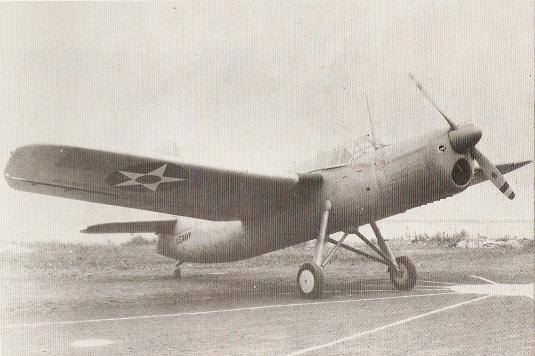Vought XSO2U on:
[Wikipedia]
[Google]
[Amazon]
The Vought XSO2U was an American observation floatplane developed by Vought-Sikorsky for the United States Navy during the late 1930s. Intended to replace the Curtiss SOC Seagull in service as a scout aboard cruisers, it proved superior to the Curtiss SO3C in evaluation, but failed to win a production contract due to Vought's lack of manufacturing capacity.

Vought XSO2U-1 at Aviation Enthusiast Corner.
{{USN scout aircraft Vought aircraft, SO02U 1930s United States military reconnaissance aircraft Single-engined tractor aircraft Floatplanes Mid-wing aircraft Aircraft first flown in 1939
Design and development
In the late 1930s the United States Navy developed a set of specifications for a new scout-observation aircraft to operate from its cruisers in the reconnaissance and gunnery spotting roles. Intended to replace the Curtiss SOC biplane, the requirements included that the aircraft should have folding wings, have a superior range and speed to that of the SOC, and that the new type should be powered by the Ranger V-770 inline engine.Adcock 1991, p.44. Designs were submitted in response to the Navy's specifications by Vought-Sikorsky and Curtiss-Wright. The Vought design, designated Model 403 by the company, was similar to the company's Vought OS2U Kingfisher, OS2U Kingfisher, which was then under development to replace the SOC aboard U.S. Navy battleships, but had its monoplane wing moved higher on the fuselage than that of the Kingfisher, and differed in the attachment method used by its single-float landing gear. In addition, the radial engine of the OS2U was replaced by an inline Ranger V-770 in a squared-off cowling. Capable of being operated with either the float as a seaplane or with a conventional taildragger Landing gear, undercarriage as a landplane, the XSO2U utilised all-metal construction, with the exception of its Flight control surfaces, control surfaces which were fabric-covered. The wings folded to the rear for storage in a manner similar to that of the Grumman TBF Avenger torpedo bomber, . The aircraft was capable of performing dive bombing, and could be fitted with a single bomb or depth charge on a hardpoint under each wing for the mission, or for anti-submarine warfare. Gun armament consisted of two M2 Browning machine gun, M2 Browning machine guns, one mounted in a fixed position firing forwards through the propeller using synchronization gear, synchronizer gear, while the other was in a flexible position in the observer's cockpit for rear defense.Operational history
Assigned the BuNo, serial number 1440, the XSO2U-1 flew for the first time, as a landplane, in July 1939; its first flight as a seaplane took place that December. Flight testing of the SO2U showed that the aircraft lacked directional stability; the addition of a large ventral fin, connecting the rear of the float to the tail, helped to cure the problem. The aircraft also suffered from engine problems, however, that were not so easily cured; the Ranger engine was well known for unreliability, and was particularly prone to overheating problems that were never satisfactorily solved. The aircraft's original XV-770-4 engine was replaced by a XV-770-6, with a repositioned oil cooler, during flight testing; despite this, the problems continued. Despite the engine issues, the SO2U-1 was considered overall to be superior to the competing Curtiss SO3C, Curtiss XSO3C-1; however, Vought's production capacity was already taken up by manufacture of the OS2U Kingfisher scout and F4U Corsair fighter. As a result, the XSO3C was declared the winner of the contract, and was ordered into production.Bowers 1979, p.419. Named Seagull by the U.S. Navy, and Seamew by the Royal Navy, the SO3C developed a disastrous reputation in service, and was retired before the SOC biplane which it was intended to replace.Polmar 2004, p.117. Following the end of the flyoff competition, the XSO2U-1 was used as a general utility aircraft and hack (aircraft), hack by the Navy, before being supplied to the Ranger Engine Corporation in July 1942 for use in tests of the V-770 engine. These tests were intended to assist in debugging the engine for the Bell XP-77 lightweight fighter and Edo XOSE floatplane, but the V-770 remained troublesome, and after two years of testing the XSO2U was returned to the Navy. Having no further use for the aircraft, the XSO2U-1 was removed from the Navy's rolls on 6 July 1944, being subsequently scrapped.Operators
; * United States NavySpecifications (XSO2U-1)

See also
References
Citations
Bibliography
* * * * *External links
Vought XSO2U-1 at Aviation Enthusiast Corner.
{{USN scout aircraft Vought aircraft, SO02U 1930s United States military reconnaissance aircraft Single-engined tractor aircraft Floatplanes Mid-wing aircraft Aircraft first flown in 1939